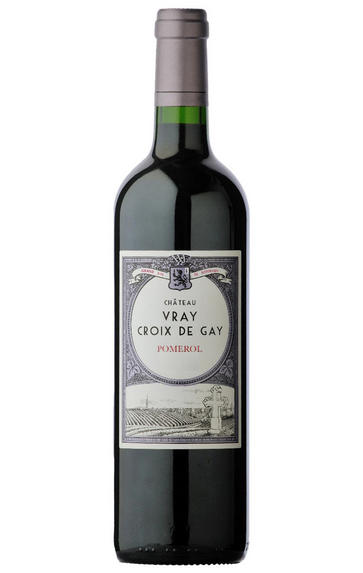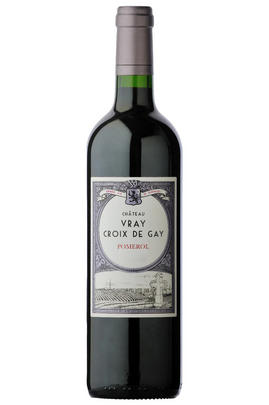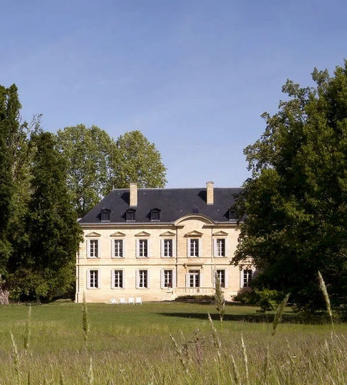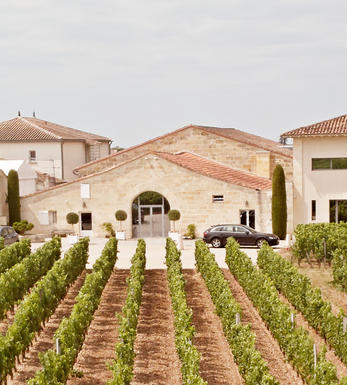
2020 Château Vray Croix de Gay, Pomerol, Bordeaux

Critics reviews
Jane Anson, Decanter (May 2021)
Lisa Perrotti-Brown, Wine Advocate (May 2020)
Jeb Dunnuck, jebdunnuck.com (May 2020)
About this WINE

Château Vray Croix de Gay
Located in the Pomerol appellation of Bordeaux, Château Vray Croix de Gay's history dates back to the 18th century when it was part of the larger Château La Croix de Gay estate. Over time, the property was divided, and Château Vray Croix de Gay emerged as a separate entity. The estate is currently owned by the Lasserre family, who have been involved in the wine business for several generations.
The vineyards of Château Vray Croix de Gay cover approximately 4 hectares and are planted with 80% Merlot, 15% Cabernet Franc, and 5% Cabernet Sauvignon vines. The estate practices sustainable viticulture, preserving the natural environment and producing high-quality grapes.
The winemaking is overseen by renowned winemaker Michel Rolland, known for his expertise in crafting rich and expressive wines. The wines are typically characterised by their elegance, complexity, and ageing potential.
While Château Vray Croix de Gay is not classified as a Grand Cru Classé in the Bordeaux wine classification system, it is considered one of the top estates in Pomerol.

Pomerol
Pomerol is the smallest of Bordeaux's major appellations, with about 150 producers and approximately 740 hectares of vineyards. It is home to many bijou domaines, many of which produce little more than 1,000 cases per annum.
Both the topography and architecture of the region is unremarkable, but the style of the wines is most individual. The finest vineyards are planted on a seam of rich clay which extends across the gently-elevated plateau of Pomerol, which runs from the north-eastern boundary of St Emilion. On the sides of the plateau, the soil becomes sandier and the wines lighter.
There is one satellite region to the immediate north, Lalande-de-Pomerol whose wines are stylistically very similar, if sometimes lacking the finesse of its neighbour. There has never been a classification of Pomerol wines.
Recommended Châteaux : Ch. Pétrus, Vieux Ch. Certan, Le Pin, Ch. L’Eglise-Clinet, Ch. La Conseillante, Ch. L’Evangile, Ch. Lafleur, Trotanoy, Ch. Nenin, Ch. Beauregard, Ch. Feytit-Clinet, Le Gay.

Merlot
The most widely planted grape in Bordeaux and a grape that has been on a relentless expansion drive throughout the world in the last decade. Merlot is adaptable to most soils and is relatively simple to cultivate. It is a vigorous naturally high yielding grape that requires savage pruning - over-cropped Merlot-based wines are dilute and bland. It is also vital to pick at optimum ripeness as Merlot can quickly lose its varietal characteristics if harvested overripe.
In St.Emilion and Pomerol it withstands the moist clay rich soils far better than Cabernet grapes, and at it best produces opulently rich, plummy clarets with succulent fruitcake-like nuances. Le Pin, Pétrus and Clinet are examples of hedonistically rich Merlot wines at their very best. It also plays a key supporting role in filling out the middle palate of the Cabernet-dominated wines of the Médoc and Graves.
Merlot is now grown in virtually all wine growing countries and is particularly successful in California, Chile and Northern Italy.


Buying options
Add to wishlist
Description
Only a very limited quantity of this wine is available, and sales are handled by our Account Managers. You can find out more about this service here. If you would like to hear about Bordeaux 2020 En Primeur releases, sign up here.
Merlot 75%, Cabernet Franc 25%
We have not been able to taste this wine. This is perhaps one of the last undiscovered jewels of the Pomerol plateau. The vineyard is split into several plots. One of the two major parts is close to Petrus and Lafleur, the other close to Trotanoy and Le Pin. With these riches, it’s little surprise that Artémis Domaines (owners of Ch. Latour) took an interest and were in sole control since 2017, until selling to the owners of Ch. Calon Ségur in ’20. Jean-Claude Berrouet (ex-Petrus) consults here.
wine at a glance
Delivery and quality guarantee